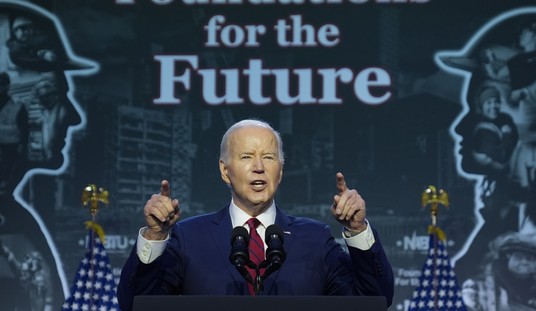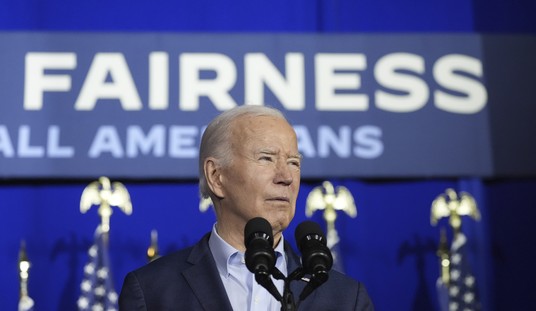Baby Boomers have a vested interested in pushing the myth that America in the 1950s was boring, sanitized, conformist and deeply unjust.
“You rubes should be grateful we finally came along to liberate you!” Boomers chirp at every available opportunity, as if Woodstock was Omaha Beach with brown acid.
Yeah, thanks for disease, divorce and the Grateful Dead.
One of the most offensive movies I’ve ever (almost) seen wasn’t Hostel or Cannibal Holocaust but the smug, simple-minded Pleasantville (1998) — “almost” because its arrogant, ham-fisted Promethean concept infuriates me so much I can’t sit through it.
Even Boomer and unrepentant leftist David Macaray scoffs:
Everything that the boomers believed happened for the first time during their coming-of-age years actually happened a decade earlier, and in a more disciplined, modest and elegant fashion — the critical difference being that these remarkable phenomena didn’t affect the masses or spill out dramatically into America’s streets. That wouldn’t happen until the turbulent 1960s.
Lenny Bruce, anybody? James Baldwin? Sylvia Plath? Allen Ginsberg and Norman Mailer?
Even if you don’t care for them, they were the originals whom lesser talents spent the 1960s (and beyond) emulating.
And those were the radicals.
Below, check out the two most popular, highest paid — and therefore most mainstream — entertainers of their era, in action.
Yeah, the 1950s were so bland and uptight…
https://www.youtube.com/watch?v=0mPaC0chAVM
The Treniers’ “Rockin’ Is Our Business” usually isn’t brought up in fights over which was the first rock and roll record, even though the song has the word “rock” in the title, which sometimes seems to be the major criteria.
Bill Haley and His Comets’ 1954 recording of “Rock Around the Clock” never tops those lists any more, at least when they’re made by audiophiles and music nerds.
These days, the cognoscenti tend to name “Rocket 88” or “Good Rockin’ Tonight.” (See what I mean?)
This guy nominates a 1899 ditty called “All Pimps Look Alike To Me.”
However, even snobs concede that the more whitebread “Rock Around The Clock” pushed this “new” sound into the mainstream, thanks to an assist or two from Hollywood.
“Rock Around the Clock” started out as a B-side, backing something called “Thirteen Women (and Only One Man in Town”), “the prototypical atomic fantasy song that features a working stiff dreaming about being the only male to survive an H-Bomb attack.”
In the soon-to-be-abandoned Tin Pan Alley fashion of the time, neither song had been written by or specifically for the band.
And Bill Haley was an unlikely rock and roll pioneer, especially when compared to freaky eccentrics like Little Richard and Jerry Lee Lewis.
Haley was 30 — he looks at least 50 to “modern” eyes — husky, with a goofy, greasy Kewpie Doll curl on his forehead and a background in Western swing… and yodeling.
Years later, one music writer would describe Haley’s voice as “solid as a plank — and as wooden.”
“He was the right man at the right place at the right time.”
That place was the Comets’ very first recording session for Decca Records, their new label.
Now, if you’ve got a crazy old uncle who insists that rock music is a tool of Satan invented by Freemasons and the Illuminati, then don’t let him read this bit:
And so we arrive at the Pythian Temple in New York City [on April 12, 1954]. This imposing art deco building was the headquarters of the New York chapters of the Knights of Pythias, a fraternal order bearing similarities to the Freemasons. We shall ignore, if that is possible, the honeycomb of hidden chambers in which secret and no doubt dreadful ceremonies took place and pass further in to the building to a ballroom in which Decca had installed a recording facility in the 1940s.
(If you think the last of the conspirazoid crazies died out with backmasking, don’t miss “Did the Illuminati Ban KISS From the Rock & Roll Hall of Fame for Satanism?” written only last year.)
The Comets arrived at the Pythian hours late, having been stranded when their ferry into the city hit a sandbank.
With the, well, clock running down, veteran producer Mitt Gabler oversaw the brisk, now truncated studio session, after cleaning up each song’s risque lyrics a bit.
But not entirely; the line “I’m a one-eyed cat peepin’ in a seafood store” somehow made it onto the disc:
Rock and roll historians usually say that the line survived because no-one at the Comets session understood it. I prefer to think that it was left in because Bill Haley was a one eyed cat – thanks to botched eye surgery when he was a kid.
Gabler and the band devoted most of their booked studio time to the single’s weird A-side, mostly because Gabler owned a chunk of the publishing rights.
“Rock Around the Clock” was squeezed out in the last thirty minutes.
https://www.youtube.com/watch?v=HA0_NRjx9KQ
At first, the single achieved only modest success.
But it did catch the ear of Richard Brooks, a young writer/director working at MGM.
In a 1983 New York Times interview, he claimed that hearing “Rock Around the Clock” inspired him to quit working on Ben Hur (a questionable choice in retrospect) and make a film about Rock & Roll. This led him to Evan Hunter’s novel, Blackboard Jungle, about a schoolteacher trying to bring order to an inner-city school. The book was in the middle of being banned in libraries across the country.
Convinced the film could make money, Brooks talked MGM into giving him 1.2 million dollars, an amount in line with films of the B-movies status, and set out to make a picture.
Blackboard Jungle‘s star was Glenn Ford. Decades later, his son Peter remembered the director coming over to the family home, just before Peter’s 10th birthday:
Richard Brooks and my father would meet away from MGM during production to discuss the film. Working on a short schedule with no rehearsals with mainly non-actors was a test for everyone. Richard stopped by our house on occasion to visit Dad and talk about the production. It was on one of these visits that Richard heard some of my records. One of them was “Rock Around the Clock.” I now know that he borrowed that record and some others on one of his visits.
MGM eventually purchased the rights to “RATC” for $5,000 from Decca Records with the condition that they could only use the music three times in the film. It has been written that for $2,500 more they could have owned the song outright. The producer of Haley’s recording, Milt Gabler, once claimed that MGM bought the song for a dollar.
Brooks chose “Rock Around the Clock” to play over the movie’s opening credits.
The film opened on March 19, 1955 and caused a sensation.
That not only introduced rock to mainstream America but forever cemented its image as a fashionably dangerous youth music that followed its own rules. The use of the song in the movie gave juvenile rebelliousness a beat and made it hip.
It was the first rock ‘n’ roll record to go to No. 1 in the United States.
https://www.youtube.com/watch?v=iRX2rPd_c4M
MGM must have been kicking itself.
Somehow rival movie studio Columbia quickly snatched up the rights to the song “Rock Around the Clock.”
Soon, a highly fictionalized film version of Bill Haley and His Comets’ rise to fame was in the works.
Just as the Comets were journeymen musicians, the movie project was helmed by two old studio hands: director Fred F. Sears and producer Sam Katzman.
In an affectionate look back at the finished product, Bruce Elder writes that “even if they were 20 to 40 years too old to appreciate the music on its own merits personally,” Sears, Katzman and the rest of the production team “arrived at an approach that was sympathetic to its needs and worked for the movie.”
Rock Around the Clock premiered on March 21, 1956, almost a year to the day after Blackboard Jungle first hit theaters.
The movie is fast paced, well-choreographed fun, with great performances by Haley as well as The Platters and other acts.
For those who keep watch for such things, the movie boasts not one but two attractive, smart, independent career-women characters; don’t listen to the Boomers — sometimes women did work in those pre-feminist “bad old days.”
The movie helped make it official: Rock and roll was huge.
And not everyone was happy about it:
The New York Times carried a story from Hartford, Connecticut, headlined ‘Rock & Roll Called “Communicable Disease.” A psychiatrist named Francis J. Braceland termed it a ‘cannibalistic and tribalistic’ sort of music. ‘It is insecurity and rebellion,’ he said, ‘that impels teenagers to wear “ducktail” haircuts, wear zoot suits and carry on boisterously at rock & roll affairs.”
Reaction overseas was even crazier. English teddy boys famously rioted when the film debuted in 1956; when Haley toured there, his concerts had a profound impact on the likes of Paul McCartney and Pete Townsend, to name but two future rock legends.
Ireland witnessed its share of mayhem, too:
When the film Rock Around the Clock commenced showing in Dublin cinemas, it hit the headlines and remained there during much of 1957…. not the film itself, but the antics of the Teddy Boys, who flocked, en masse and often, to see their very own movie.
The Teddy Boys would riot in the cinemas, ripping up seats with flick knives,throwing bottles and other missiles from the balconies and engaging in fist and sometimes chain fights, causing great consternation.
A German who had more pressing reasons to lash out recalled:
During the mid-1950s I was a rebel, or a “Halbstarker” as we used to say– somewhere between 14 and 15 years old and against everything I thought stood in my way.
Those days in former communist East-Germany where I grew up, rebellious youth were viewed with criticism. Music and rebelliousness were a natural combination giving us a way to express ourselves against everything and everyone.
Then rock’n’roll swept across the sea from America and crashed onto our shore like a wave that would wash us of our troubles. It was a new genre that gave us a way to express our explosive angst with rhythm, beats, lyrics and instrumentation.
Billy Haley was the first rock’n’roller that brought this new sound to us in Eastern Germany. It was wild and convulsive with a hint of explosiveness that made it the music ideal for protest against the state apparatus.
Haley’s music expressed our undifferentiated feeling of protest:
“We’re against it!”
Bill Haley and His Comets opened the door through which Elvis Presley and countless other artists soon rushed, but they never quite replicated their own success with “Rock Around the Clock.”
The group took advantage of corny revivals and faddish nostalgia whenever possible. The audience at the London Rock and Roll Show of 1972 — headlined by the Comets and other 1950s legends — included eventual Clash co-founder Mick Jones; future Sex Pistols impresario Malcolm McClaren ran one of the t-shirt stalls.
Alas, according to CNN, Bill Haley “had become an oldies show anachronism by the time he died of a heart attack in 1981.”
He was only 55.









Join the conversation as a VIP Member